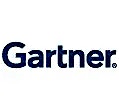How we enable better digital experiences for your business growth
HCLTech has been a leader in cloud and virtualization technologies since its inception. Our vision for the digital age is a modern IT data center built on a service-oriented and secure infrastructure. When you need hybrid cloud services tailored to your business, we combine automation and proven process frameworks to help future-proof your operations.
By harnessing disruptive technology and flexible commercial and global delivery models, we work to reduce your Total Cost of Ownership (TCO) and deliver consulting, operations and services for seamless data center and cloud transitions, migrations and integrations. Our hybrid cloud solutions are designed to meet you wherever you are in your digital journey.
So far, we've helped more than 100 enterprises migrate to global data centers and currently manage over half a million servers worldwide. Whether you're seeking hybrid cloud consulting or fully managed services, we have the experience to guide you forward.

Our Best-in-Class Hybrid Cloud Infrastructure Services
HCLTech leverages next-generation hybrid data center management architecture to boost agility and deliver secure data center and hybrid cloud services for clients with automation and orchestration at the core. If you're exploring hybrid cloud security or planning a migration, we provide the expertise you need.
Build a Stronger Organization with Our Hybrid Cloud Services
We think these topics might interest you
Case Studies
Analyst Reports

Gartner
HCLTech named a Leader in Gartner® Magic Quadrant™ for Public Cloud IT Transformation Services, 2024

Gartner
HCLTech recognized as Customers' Choice in 2025 Gartner Peer Insights for Public Cloud IT Transformation Services

Gartner
HCLTech recognized as a Customers’ Choice in 2024 Gartner® Peer Insights™ Voice of the Customer for Data Center Outsourcing and Hybrid Infrastructure Managed Services, Worldwide

HFS
HCLTech recognized as Leader in HFS Horizons Industry Cloud Service Providers, 2024
Client Testimonials
DNB
EVP & Head of IT Operations
& Service Integration
“For about 8-9 months, there has been tremendous hard work from HCLTech, to bring automation to the IT infrastructure operations. HCLTech has helped us transform from a quite manual way of IT operations into an automated one.”

ArcelorMittal
Head of Corporate
& Transversal Infrastructure
“I was impressed with the capability of a company like HCLTech to adapt and to be able to answer to our needs. Cloud was one of the exciting strategic projects, and now of course we are thinking of new things together.”

Explore Our Latest Insights
Supercharge your digital journey with HCLTech's Hybrid Cloud Services. Seamlessly integrate and manage your diverse IT environments for enhanced agility, flexibility and efficiency. Explore insights now!
Frequently Asked Questions about Hybrid Cloud Services
HCLTech’s hybrid cloud services combine private and public cloud environments to deliver secure, scalable and flexible IT infrastructure. We offer end-to-end capabilities,from consulting and migration to ongoing management,helping clients optimize workloads, accelerate innovation and future-proof their operations with automation, robust security and proven frameworks.
We see strong adoption of our hybrid cloud solutions across financial services, healthcare, manufacturing, retail and more. These industries benefit from enhanced regulatory compliance, secure data management and business continuity. Our experience managing complex, mission-critical environments enables us to tailor solutions for diverse sector-specific needs.
Automation is central to our hybrid cloud strategy. By automating routine operations, provisioning and monitoring, we help clients reduce manual effort, minimize errors and accelerate service delivery. Our AI-driven tools ensure consistent performance, proactive issue resolution and cost optimization, enabling IT teams to focus on innovation and growth.
Security and agility are built into our data center operations. HCLTech implements robust security frameworks, continuous monitoring and compliance controls while leveraging automation to streamline processes. Our adaptive data center solutions enable clients to respond quickly to changing business needs without compromising on data protection or regulatory requirements.
We collaborate with hybrid cloud services industry leaders such as AWS, Microsoft, VMware, Dell, IBM, NetApp, Nutanix and more. These partnerships enable us to offer clients a robust, interoperable hybrid cloud ecosystem—combining best-in-class technologies with our deep expertise to deliver innovative, future-ready solutions.
Absolutely. At HCLTech, we help clients leverage hybrid cloud as a catalyst for digital transformation. Our expertise ensures seamless integration of legacy systems with modern cloud platforms, enabling agility, innovation and cost efficiency. We guide organizations through every stage, aligning technology investments with evolving business goals.
HCLTech provides a comprehensive suite of hybrid cloud infrastructure services, including cognitive infrastructure, mainframe modernization, fully managed PaaS, automation-driven operations, edge computing and adaptive data centers. Our offerings are designed to streamline IT management, boost agility and enable secure, scalable cloud adoption for clients worldwide.
We take a proactive approach to cloud cost governance by leveraging advanced analytics, automation and continuous monitoring. Our solutions provide clients with real-time visibility into resource usage, enforce policy-based controls and identify optimization opportunities,ensuring predictable costs and maximum value from hybrid cloud investments.
Our approach to hybrid cloud migration is comprehensive and client-centric. We begin with a detailed assessment of the existing IT landscape, develop a tailored migration roadmap and execute with minimal disruption. Leveraging proven methodologies and automation, we ensure a secure, seamless transition that aligns with each client’s business objectives.
Adopting hybrid cloud with HCLTech empowers clients to achieve greater agility, scalability and cost efficiency. Our tailored solutions enable seamless integration, enhanced security and business continuity. With our proven frameworks, automation and global delivery capabilities, clients can confidently accelerate digital transformation and drive sustainable growth.




















































